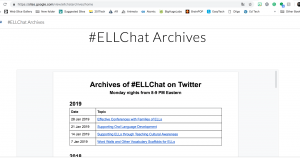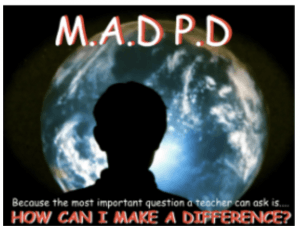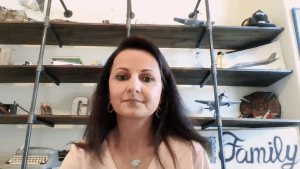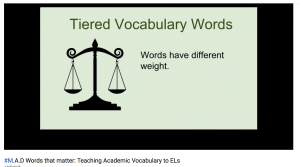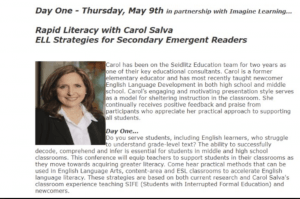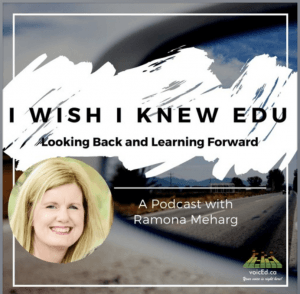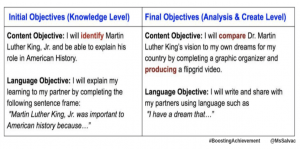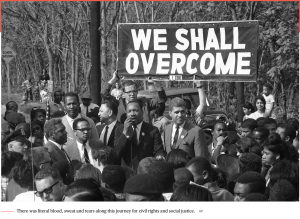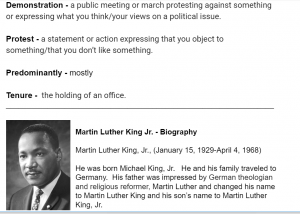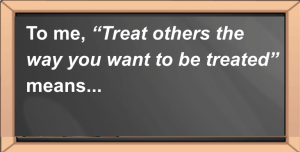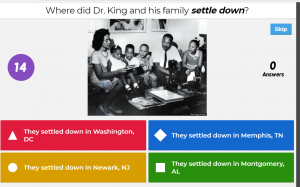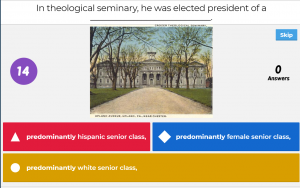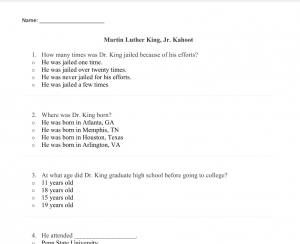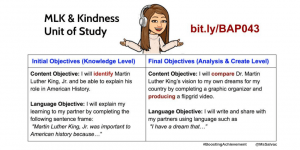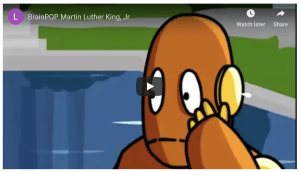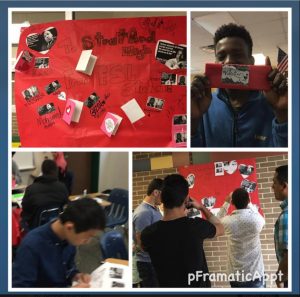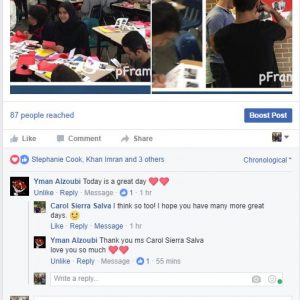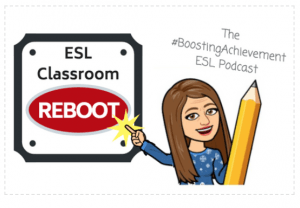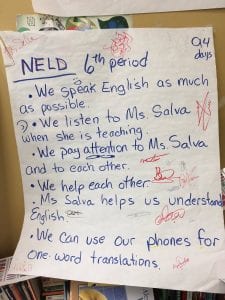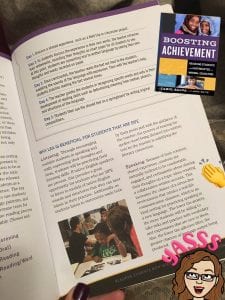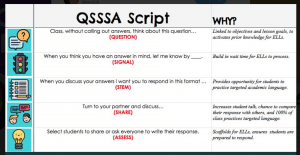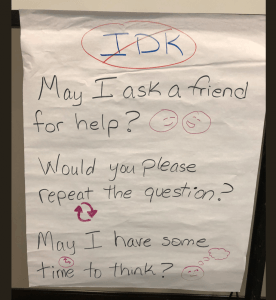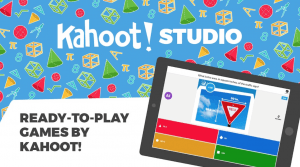Twitter chats are great, aren’t they? If you’re on Twitter for any length of time, and you’re there because you serve English learners, you will likely see the #Ellchat hashtag roll across your screen.

 Follow that hashtag and you will open yourself up to a supportive community and endless opportunities for professional growth.
Follow that hashtag and you will open yourself up to a supportive community and endless opportunities for professional growth.
You can find this show in your favorite podcast app or listen to it right here:
Listen to “BAP045 Judie Haynes and Karen Nemeth of #ELLCHAT” on Spreaker.
The hashtag began as the name of a weekly Twitter chat. To this day, you can tune in to Twitter on Monday nights at 9pm ET to see people following the hashtag to respond to the questions put forth by Judie Haynes and Karen Nemeth.
I had the honor of interviewing these ladies and it was such a delight!
I love the idea of treating language as an asset. What a strong message to send to all teachers. #ELLCHAT https://t.co/TZvAJFFo4Y
— Judie Haynes (@judiehaynes) January 29, 2019
My respect for Haynes and Nemeth grew more and more as they explained all they have done over the years to keep the chat alive. During the show, we talk about how they met and how they began hosting the chat each week.
Working with #ELLCHAT has been one of the highlights of my career! I appreciate all I have learned from Judie, Shaeley, Carol and all old and new friends that share so much to enliven our work each week! I wonder what ESL work would be like if #ELLchat had never started
— karen nemeth (@KarenNemethEdM) January 26, 2019
Through this interview I learned that both Karen and Judie have been board members and are active in NJ TESOL for years. Judie started the chat with Linda Hahner in 2009 and Karen joined in 2010.
 The three of us agreed that Shaeley Santiago was a critical contributor to the weekly chat. Shaeley regularly helps with questions and, since September of 2017, she has been archiving all the chats on this google site.
The three of us agreed that Shaeley Santiago was a critical contributor to the weekly chat. Shaeley regularly helps with questions and, since September of 2017, she has been archiving all the chats on this google site.
Thank you, Shaeley!
What is the Secret?
Many of us are now running our own Twitter chats because we see the incredible value of what #ELLCHAT is offering our field. As educators, we know that collaboration is the answer! As we attempt to replicate what Judie and Karen have done, we might want to hear what they feel have been important over the years. They talk about the following points. Much of this they learned through trial and error:
- Being purposeful in asking questions that build momentum vs asking for opinions. Karen mentioned that they don’t ask “What do you think about…?” but rather “What is a challenge you face regarding..?”
- Ordering the questions in a particular way. Over the years they have played around with what types of questions to ask first. They may start with a challenge and lead up to asking for resources.
- Supporting people with models. Judie mentioned that some questions don’t work out. People don’t respond well to them or don’t answer them. Sometimes they will answer the question themselves to offer a model response.
- Staying away from politics or asking questions that are more general and not about a specific statement or event in the news. Example from a recent chat: What can teachers do to provide a culturally responsive environment when news stories and local or national events may highlight intolerant attitudes or actions?
- Actually running the chat. They moderate and shut down voices that are not collegial. This likely helps people feel safe in the chat. They also ask people to keep their conversations on topic. (I’ve been guilty!) Judie said they learned to be gentle about this and acknowledged that it is a challenge even for her to resist being social and getting off topic when she sees friends joining.
- Getting into the questions immediately as the chat begins. They ask for introductions but don’t make a big deal about it so they can get to the questions asap.
- Fancy graphics are not necessary. I love my graphics but I can appreciate that they are not necessary for a strong, successful chat. Karen and Judie have proven that the quality of your chat is what people return for each week.
- Consistency. I thanked them more than once for all the years they have put into this chat. It has been there for us over and over again. It has surely been a significant factor in the success of the chat and I feel that everyone in our PLN should be grateful for their service.
Why Should we be Grateful?
In a field where you can feel isolated as a teacher, our PLN is vitally important. As educators, we know the value of collaboration and we also know that many teachers cannot get to conferences or quality professional development. #ELLChat has endured for almost a decade and has grown into somewhat of a culture with people using the #ELLCHAT hashtag 24 hours a day and 7 days a week.
Judie and Karen run about 40 chats a year. The time and energy they devote to “harvesting” information and creating questions are astounding to me.
They mentioned Tan Huyhn, Valentina Gonzales and other folks who are now in the PLN. It was great to hear that they feel there are so many important voices in the collaboration. We talked about the importance of collaboration among thought leaders like these to the new teachers with fresh eyes!
They often present at conferences on why people should gather on social media as a form of professional learning. We all had to laugh when they describe the astonishment of younger teachers and those who complain that the veteran teachers are not willing to get onto social media. At one point, Karen said, “Hey.. we are at retirement age and we are the cool kids!” Ha! I couldn’t agree more.
I hope this show has convinced you to join us on Twitter as we collaborate around the best ways to support language learners. If you’re already connected with us there, I’m so pleased to have offered you a window into the world of ELLChat. It truly is the glue that holds our PLN together and we can all be grateful to Judie, Karen and Shaeley for the contributions they are making to our field.
#ELLchat also has a presence on Facebook so check them out there as well.
You can find all things Karen Nemeth at her Language Castle Website here. She has authored more than 10 books and has a great newsletter for people at that site where she has collected a lot of important information for her followers.
You’ll find more on Judie and the work she does here at her Everything ESL website. Look for the relaunch of her new site soon!
Check out her new book, Teaching to Strengths; Supporting Students Living with Trauma, Violence and Chronic Stress She authored this book with
Thank you again Judie & Karen. We are indebted to you and we look forward to the next 10 years of #ELLCHAT!
And THANK YOU for tuning in, for your passion for ELs and all you are doing! Please reach out. I’d love to hear from you.
PS: Let’s connect IRL! Can you make one of these events??
NABE March 7-9 in Orlando. I have Breakout Sessions
NAELPA, formerly NCSTIIID, is having our annual meeting on March 6 in Orlando. Come! I’m the keynote & on a panel that day.
Michigan Association of Bilingual Educators (MABEMI) May 9 & 10. I’m a keynote and I have break out sessions
Awesome $129 rate for Rapid Literacy pre-conference May 8 through MABEMI.($99 if you go as a group!)
Long Island ESOL March 23rd. I’m on a panel and I have sessions.
Andrea Honigsfeld will be the Keynote Speaker for #VirtuEL19! – Let’s get some IRL watch parties together!
